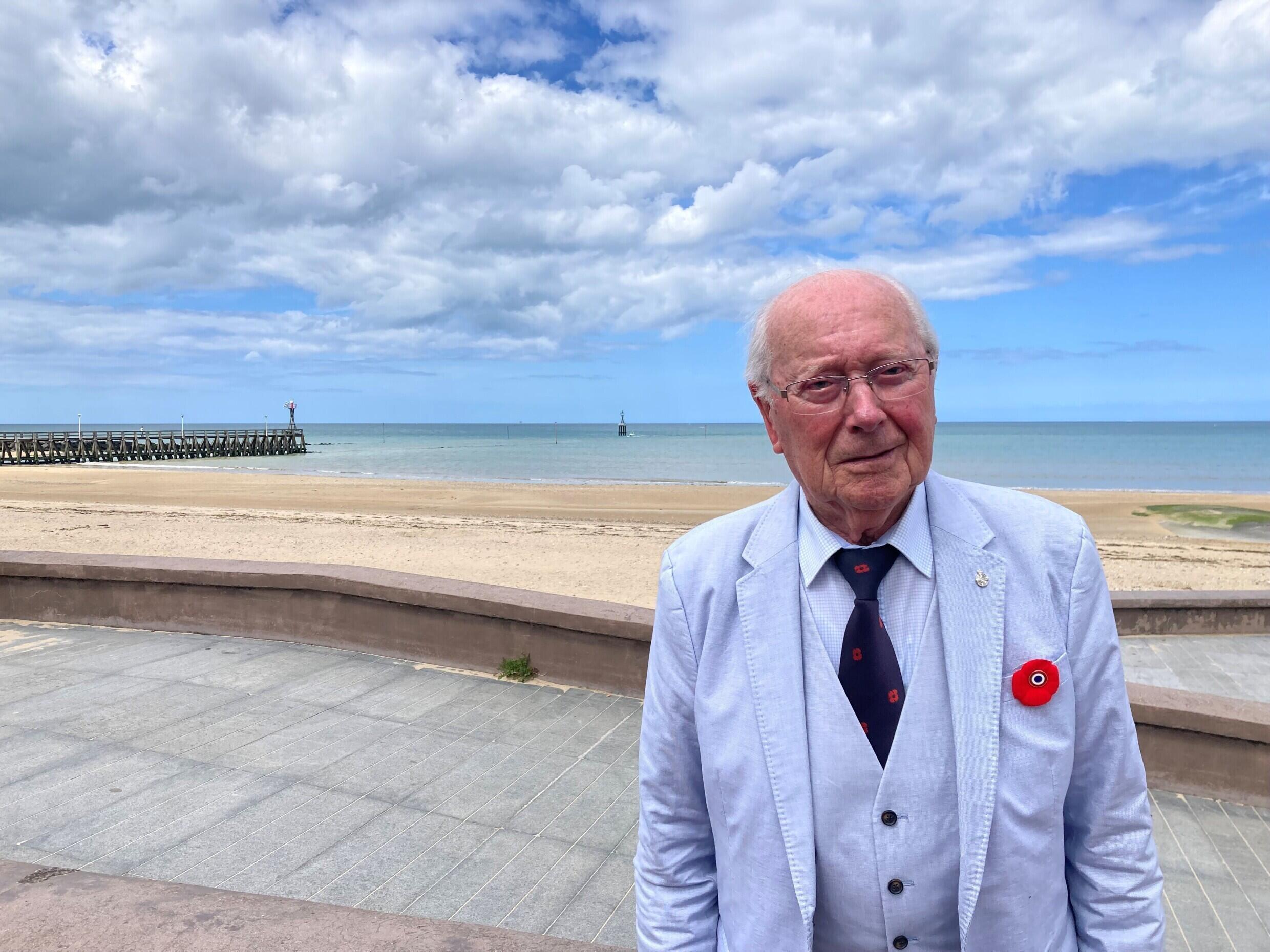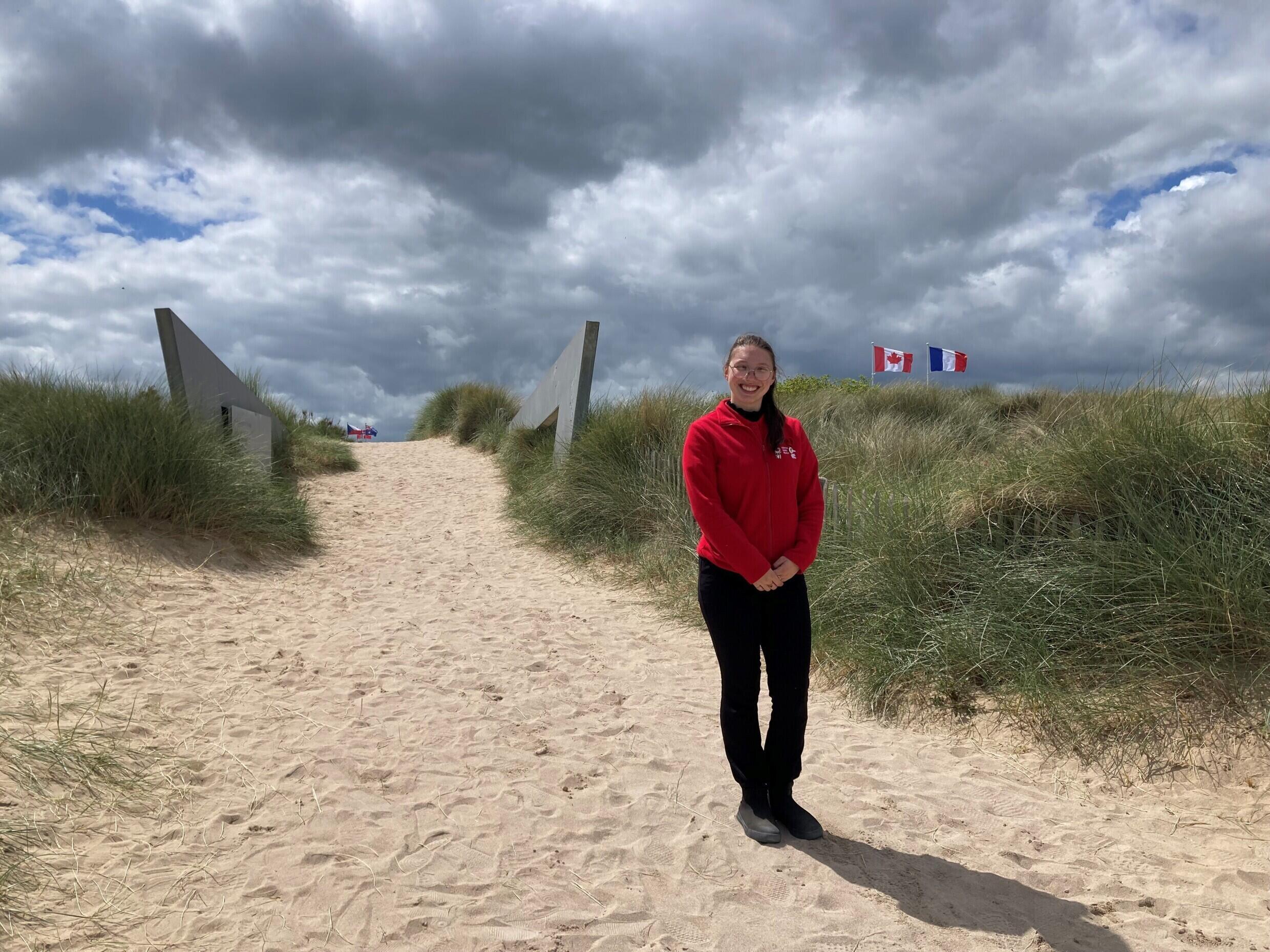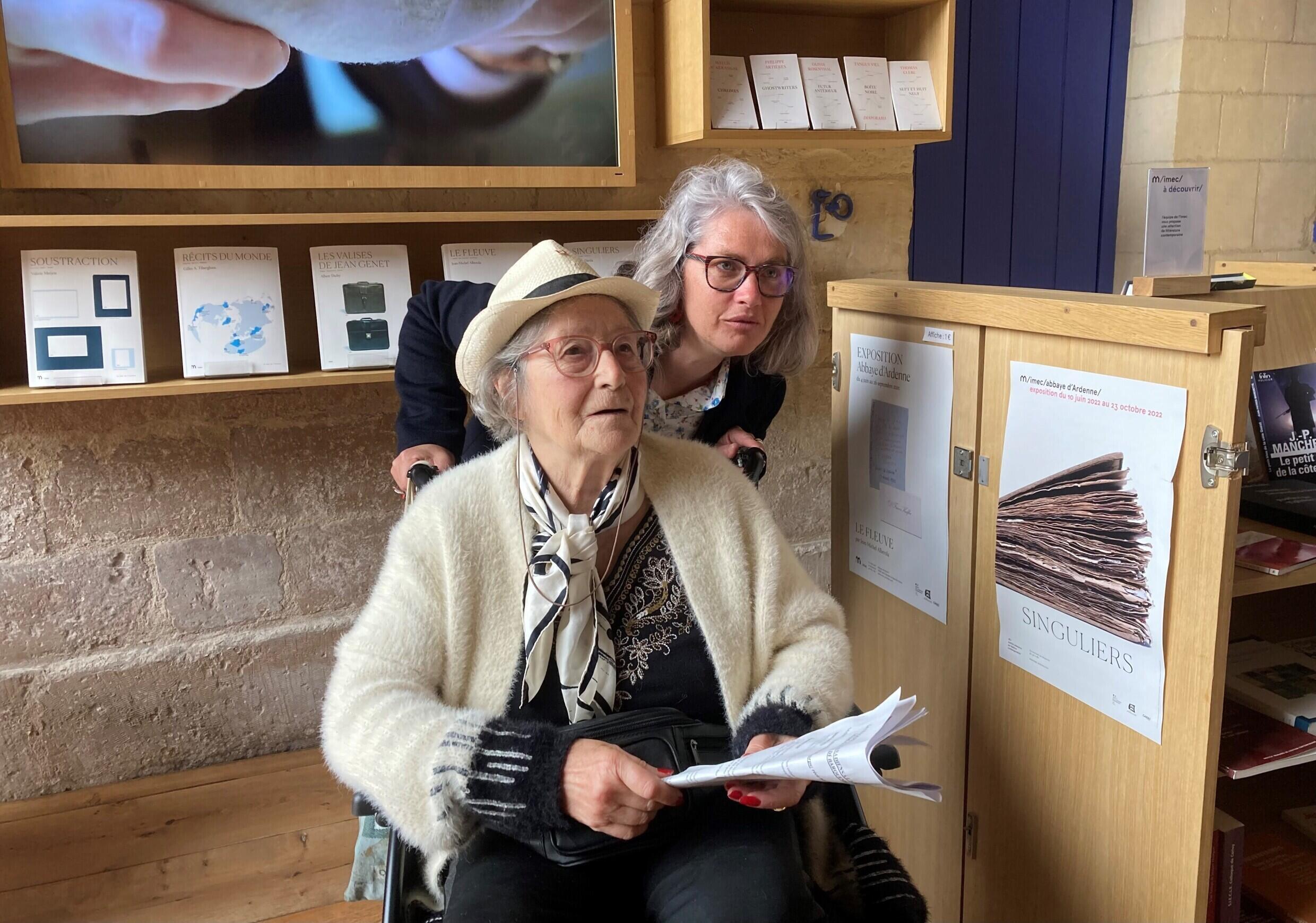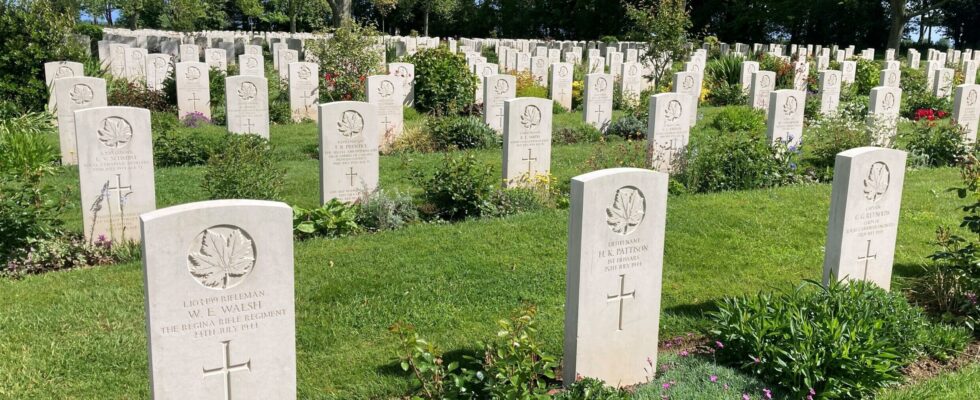As part of the Allied troops, 14,000 Canadian volunteers landed on the Normandy coast on June 6, 1944, in the Juno Beach area. A decisive contribution to the war effort, which nevertheless remains little known beyond the borders of Normandy.
“ What I remember is swimming to shore. » Jim Parks will celebrate his 100th birthday in September, but he has kept the words and the tone of the young man he was on June 6, 1944. Canadian flag hanging behind him, he recounts, during a videoconference call, his landing in Courseulles-sur-Mer, within the Royal Winnipeg Rifles: “ There was a lot of noise. German fire. I had lost all my equipment at sea. So I recovered a helmet, a rifle and some ammunition from a dead body. Many of my friends died on this beach. We trained together for years in Canada, then in England and they died straight away. »
{{scope.counterText}}
{{scope.legend}}
{{scope.counterText}}
{{scope.legend}}
© {{scope.credits}}
At the time, the Canada is still a very young country, with an army of no more than 8,000 men. Most of the soldiers were, like Jim Parks, volunteers, with no combat experience. They will find themselves facing some of the best German forces. “ It was what had to be done », assures Jim Parks, who had lied about his age to be able to engage with the Allies. “ I was 15 years old. When I look at the photos from the time, I wasn’t fooling anyone, everyone knew I wasn’t 18! », he smiles. “ But at the start of the war, they weren’t very careful, they were very happy to have us. » Followed by the years of training, in Canada and United Kingdombefore setting off, like 14,000 other Canadian soldiers, towards the Juno Beach sector, the portion of the French coast assigned to the Canadians, from Courseulles-sur-Mer to Saint-Aubin-sur-Mer.
A deadly first day
More than 350 Canadians were killed on the first day of the landing. More than 5,000 during the two and a half months of the terrible Battle of Normandy. The Canadians suffered the greatest number of casualties of any division in the British Army Group. Like around fifteen Canadian veterans, Jim Parks will attend the commemorations in France this year, with his family, to pay tribute to them. “ This is the last big anniversary in which the few veterans still alive will be able to participate. It’s very important for me to remember my friends, all those we lost on this beach “, he explains. “ If I go to the Bény-sur-Mer cemetery, I know most of the names on the graves. »
Two thousand and forty-nine men are buried in this cemetery – one of two Canadian war cemeteries – located in the town of Reviers. The maple leaf steles line up in a flower garden, in the shade of pines and maples. “ I get goosebumps every time I come in here. », Comments Hubert Delalonde, the mayor of Bény-sur-Mer. “ I realize the enormity of what happened. » For the commemorations, thousands of candles will illuminate each grave, with the help of schoolchildren from the department. “ A flame of remembrance will come from Canada, with torches that will light the candles in this cemetery and all other Commonwealth cemeteries in Normandy “, enthuses Carl Liversage, the organization’s D-Day80 project manager.
Read also80 years of the Landings: “In this commemoration, there is also the dimension of reconciliation”
An eclipsed contribution
This contribution of Canadians to the war effort in France is often overshadowed by that of British and American soldiers. “ I think that on the American side, Hollywood has been there with great stories to tell », says John Desrosiers, director of International Operations for the Department of Veterans Affairs Canada. “ The Americans of course played an important role, but we must not forget that there was a designated beach for Canadians! And here, around Juno Beach, people remember and are grateful. »

This role is actually recognized by witnesses of the time. Michel Le Baron was only 10 years old on D-Day. “ I didn’t know what a Canadian was. We vaguely knew where Canada was from our geography lessons, but that’s all », smiles the retiree, poppy flower in his buttonhole – the flower of remembrance in Canada. It tells the liberation of the villages by these young soldiers and the story of this Canadian pilot hidden by his father. “ The Canadians were then forgotten. At the start of the commemorations, politicians only spoke about the Americans and the British », he regrets. “ However, we also love the Canadians because they did not bomb civilians », in reference to the Allied bombings which terrorized the Normans.
However, it would take several decades for official commemorations to be organized for them, notably under the leadership of Michel Le Baron. Ceremonies often shunned by the highest representatives of the French state. Today, the retiree is worried about the war which is knocking, once again, at the gates of Europe. “ I saw my first deaths at the age of 10, when Caen was bombed. I remember these buildings burning, the smell of smoke. We should never have known about this. And yet, 80 years later, we are starting again! »
Also listenCommemorations: is memory lost?
Maintain the flame
As the last witnesses of this Battle of Normandy disappear, the urgency is to pass it on to younger generations. This is the watchword of the ceremonies of “ D Day » this year and the daily mission of the Juno Beach Centre, the only Canadian museum of the Second World War in Europe. It was created in 2003 on the initiative of Canadian veterans. “ One in four visitors is now under 18 years old », assures Catherine Quintal, mediator of the Center. A fun course is dedicated to them. “ On each screen, the child will scan their badge, test their knowledge and accumulate points. »

Each year, young Canadian guides are also recruited to provide tours. “ This is a program that was desired from the start by our veterans. These young guides are more or less the same age as them when they arrived. » Olina, 22, came from Victoria, British Columbia for a few months. “ It is so important for the youngest, who were not able to listen to the stories of their parents or grandparents, to learn what happened here on D-Day. »
“ The heart has spoken: this house is theirs! »
Gabrielle Vico, too, strives to pass on to young people the memory of the contribution of Canadians to the liberation of France. “ They were young volunteers with values! », she exclaims, tirelessly recounting the macabre discovery made by her family in the garden of Ardenne Abbey after the war: the remains of 20 young Canadian soldiers, captured at the start of the battle , and executed in defiance of the Geneva Convention. “ There, it was a mass grave. There were five bodies, they were placed haphazardly,” she describes. Since then, the Vico family has dedicated itself to piecing together the stories of these broken lives, “ so that they are alive “. “ We are eternally grateful to them », insists the almost centenarian.« I tell the schoolchildren who visit us: peace is in your hands. »

Nicole Hoffer has been preparing for several months now for this 80th anniversary of the D-Day landings. It was by chance that this Norman woman discovered that her family home, located on the beach at Bernières-sur-Mer, remained engraved in the memories of many veterans. This house in front of which more than 100 Canadians were killed or injured in the first minutes following the assault, remains as the first building liberated by the men of the Queen’s Own Rifles of Canada. “ I saw a lot of people stopping in front and taking photos. I ended up asking them why », she laughs. “ Veterans told me that they were shown the photo of this house before boarding the boats, and told that when they saw it, they should start preparing. You can see it from a long way away. »
Nicole Hoffer then begins to open her house to each passing veteran. “ It was the heart that spoke. It became the Maison des Canadiens. This house is theirs! » The ground floor has been transformed into a museum, enriched with numerous donations from families. “ They give us small objects, here a medal, here a photo of their dad so that it stays in the house “, she explains. Here, as every year, on June 6, a lantern ceremony will be held, to the sound of bagpipes. A ceremony in which the grandchildren of Nicole Hoffer now take part, who says, with a smile: “ One day, we will have to pass the baton. »
Read alsoAnniversary of the Landing: a show project angers the descendants of the Kieffer commando
